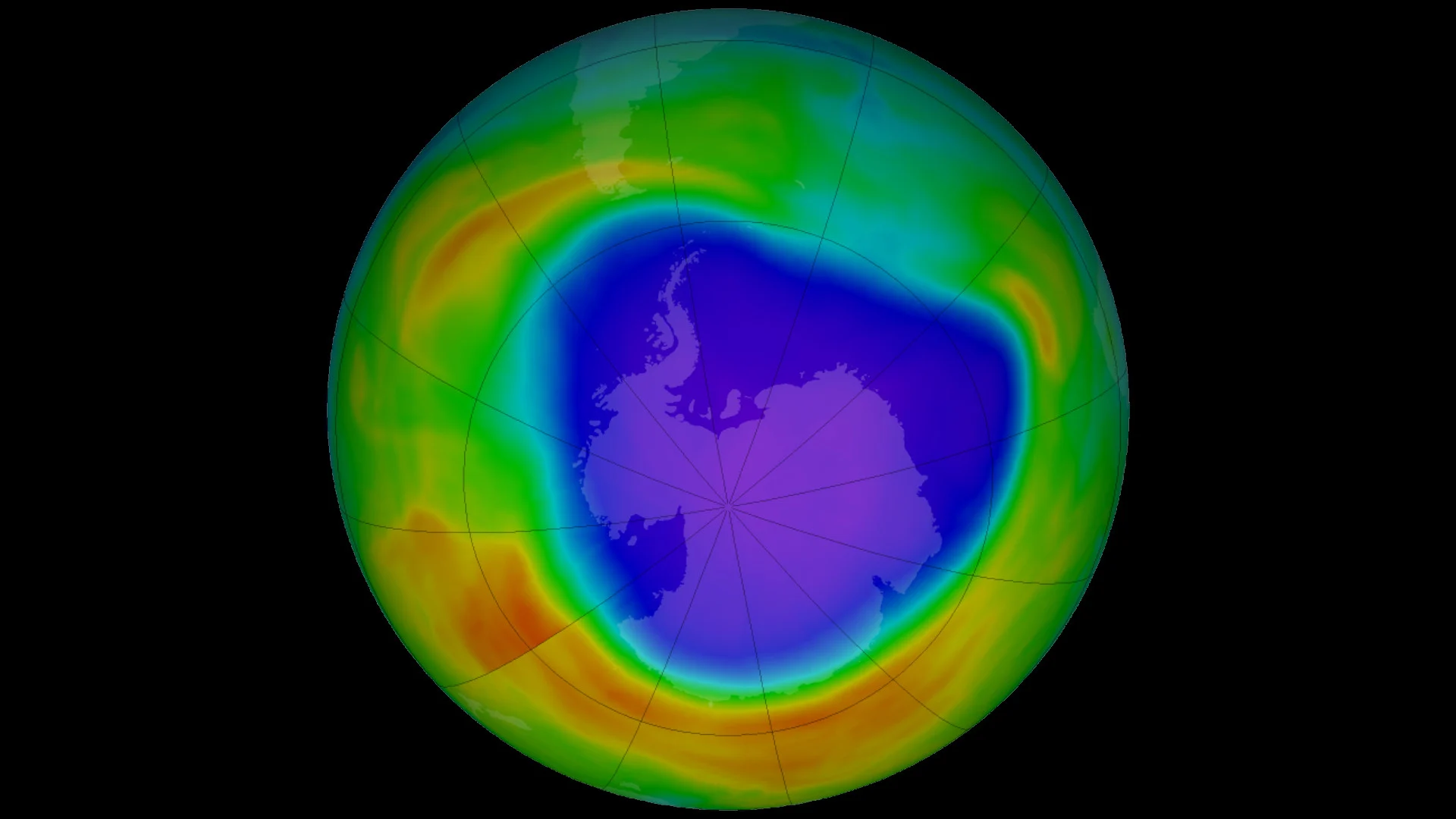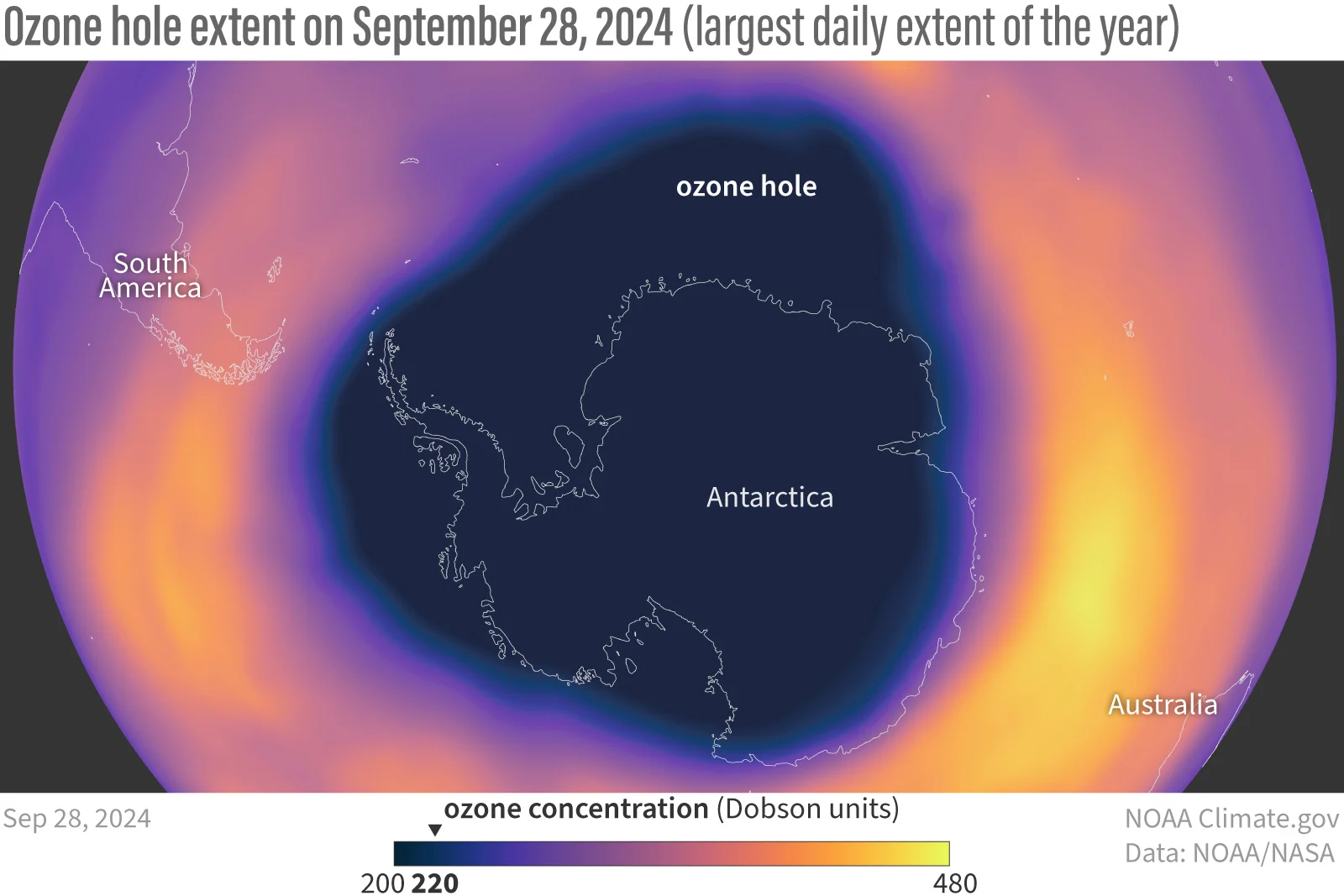
NASA, NOAA record one of the smallest Antarctic ozone holes in decades
The gradual improvement seen in the past two decades shows that international efforts to curb ozone-destroying chemicals are working.
On September 28, the Antarctic ozone hole reached its maximum size for 2024, covering a total area of roughly 20 million square kilometers. While this was large enough to engulf the entire continent of Antarctica and a good portion of the surrounding ocean, there is a silver lining. This was one of the smallest ozone holes on record so far.

The Antarctic ozone hole on September 28, 2024. The ozone hole (dark blue region) is the total area where the amount of ozone in the stratosphere is less than 220 Dobson Units. (NOAA Climate.gov)
"The 2024 Antarctic hole is smaller than ozone holes seen in the early 2000s," said Paul Newman, leader of NASA's ozone research team and chief scientist for Earth sciences at NASA's Goddard Space Flight Center. "The gradual improvement we've seen in the past two decades shows that international efforts that curbed ozone-destroying chemicals are working."
However, according to NASA, the size of this year's ozone hole can only partly be attributed to the reductions in ozone-depleting chlorofluorocarbons (CFCs). CFCs were primarily used in aerosol cans and refrigeration and identified as being harmful to the ozone layer in the 1980s, and by 1987 world leaders had agreed to the Montreal Protocol, which banned the production and use of these chemicals. By 1992, just five years after the agreement, we were already seeing the very first signs of the ozone layer's recovery.
The other factor that helped this year was an "unexpected infusion of ozone carried by air currents from north of the Antarctic," NASA said.
Weather patterns have a strong influence over ozone production and depletion over the Antarctic. Exceptionally strong wind currents flowing around the region can limit the expansion of the ozone hole. Warmer temperatures can prevent the formation of the polar stratospheric clouds where CFCs concentrate, thus reducing their overall impact on the ozone layer. In this case, wind currents transported ozone in from regions to the north, where it is more abundant at this time of year. This 'filled in' any gaps around the edges of the hole and kept its overall size down from previous years.
This year shows continued progress for the status of the ozone layer. However, there is still a ways to go.
While the area of the ozone hole is an important measure, another is its depth. The concentration of ozone in the atmosphere is expressed in Dobson Units (DU), with the global average value for ozone being around 300 DU. Overall, the true thickness of that layer is about 3 millimetres, or the thickness of two pennies stacked on top of one another. That is all that's required to block harmful UV radiation from reaching Earth's surface. The lower the number of Dobson Units, though, the thinner the ozone layer is, and thus the deeper the ozone hole is.
Scientists measured a typical thickness of the ozone layer over the Antarctic back in 1979 at around 225 Dobson Units. At its lowest point, in 2006, the ozone concentration over the Antarctic got down to 92 DU. Now, in 2024, the lowest concentration recorded was 109 Dobson Units. That's only about the thickness of a dime. It shows improvement over what was, but it is still less than half of what we should see over the Antarctic.
"For 2024, we can see that the ozone hole's severity is below average compared to other years in the past three decades," Stephen Montzka, senior scientist of the NOAA Global Monitoring Laboratory, told NASA, "but the ozone layer is still far from being fully healed."
Editor's note: A previous version of this article implied that the Montreal Protocol was signed in 1992. However, the treaty was signed in 1987, came into effect in 1989, and NASA states that the very first signs that the ozone layer was beginning to recover were seen in 1992. The error has been corrected, and we apologize for any confusion.
Thumbnail image courtesy NASA Ozone Watch











